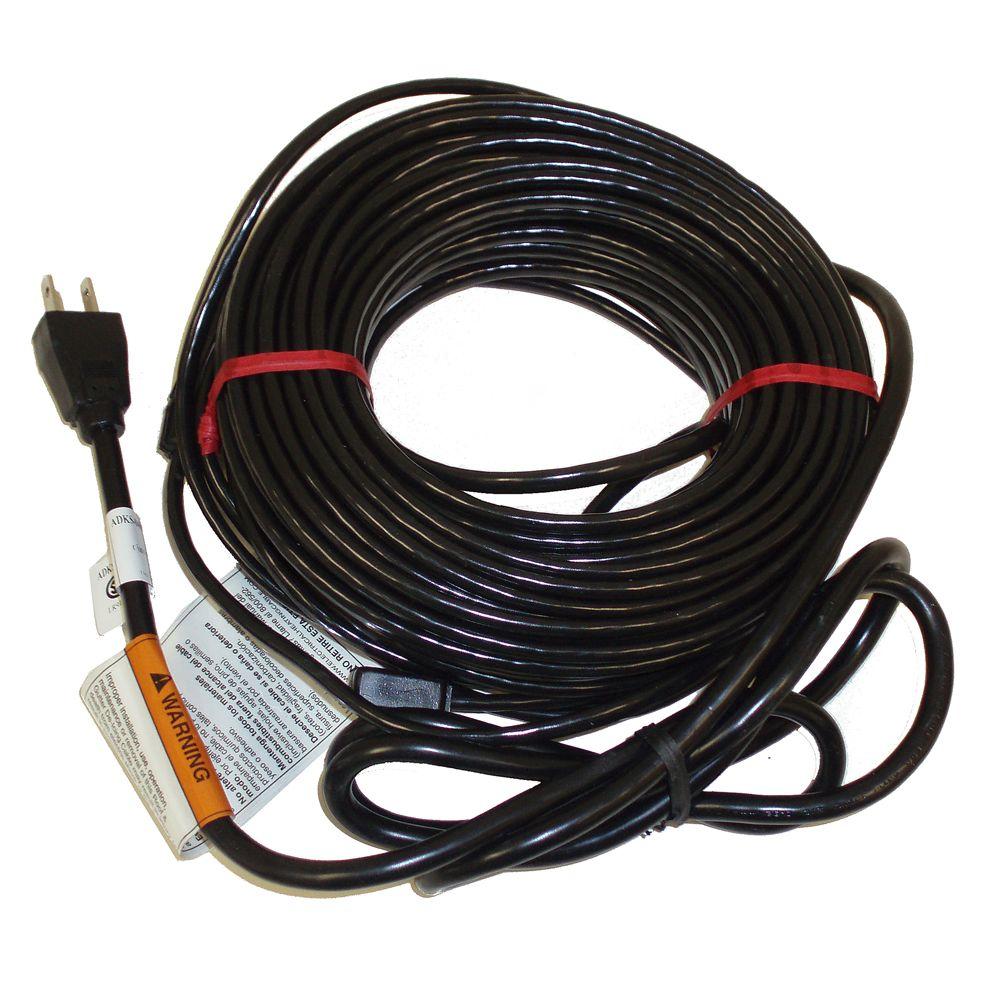The type of heat tape used on roofs and gutters to prevent ice buildup is properly called heat cable.
Heating cables for rubber roofs.
To simplify comparisons calculate the cost of each cable per foot.
Ice is not porous and will trap water.
Zig zag cables for metal roofs.
Water will flow as long as the roof surface stays above freezing.
Easyheat adks 200 ft 1000 watt roof heat cable.
During a snowstorm you simply plug in the cable into an indoor or weather proof outdoor.
Heat cables can be installed to minimize ice formation and retention on roofs with them you can prevent a lot of damage to your roof that can result from the buildup of ice dams.
Attaching the loop of the serpentine from the roof line against the heating cable in the gutter is an effective method for ensuring proper water flow.
Use a uv resistant cable tie to attach the 2 cables together roof valleys.
Use to help prevent ice from forming under the edge of your shingles.
The term heat tape refers to another product an insulated electrical wire applied to water pipes to keep them from freezing and bursting.
Usually a straight pass of heater cable extends up and back down each side of the v formed at the valley bottom.
Heat cables for roofs and gutters have widely varying price points primarily depending on the length of the cable.
Long for large roofs.
This de icing kit comes with shingle clips and is 200 ft.
Item 217163 model adks 1000.
A de icing cable also known as roof heating cables electric roof de icers and heat tapes is an electric heat cord that gets clipped onto the top of your roof.
This allows you to fairly compare prices of an 80 foot cable with a 90 foot cable.
The thermwell 200 ft.
If you want to install roof heating cables this fall in order to prevent ice damming during the upcoming snowy months look for kits that can be purchased from a variety.
While it may seem like the perfect solution to ice dam formation heat cables come with quite a few disadvantages as well.
Roof de icing cable kit can be used to keep gutters and downspouts flowing and help prevent ice from forming under the edge of your shingles.
If you must install roof heating cables during the winter season use caution in snow covered and icy areas and be sure that the edges and gutters are free from snow and ice.
Even on metal roofs the sun and building heat combine to melt accumulated snow at the roof snow interface.

